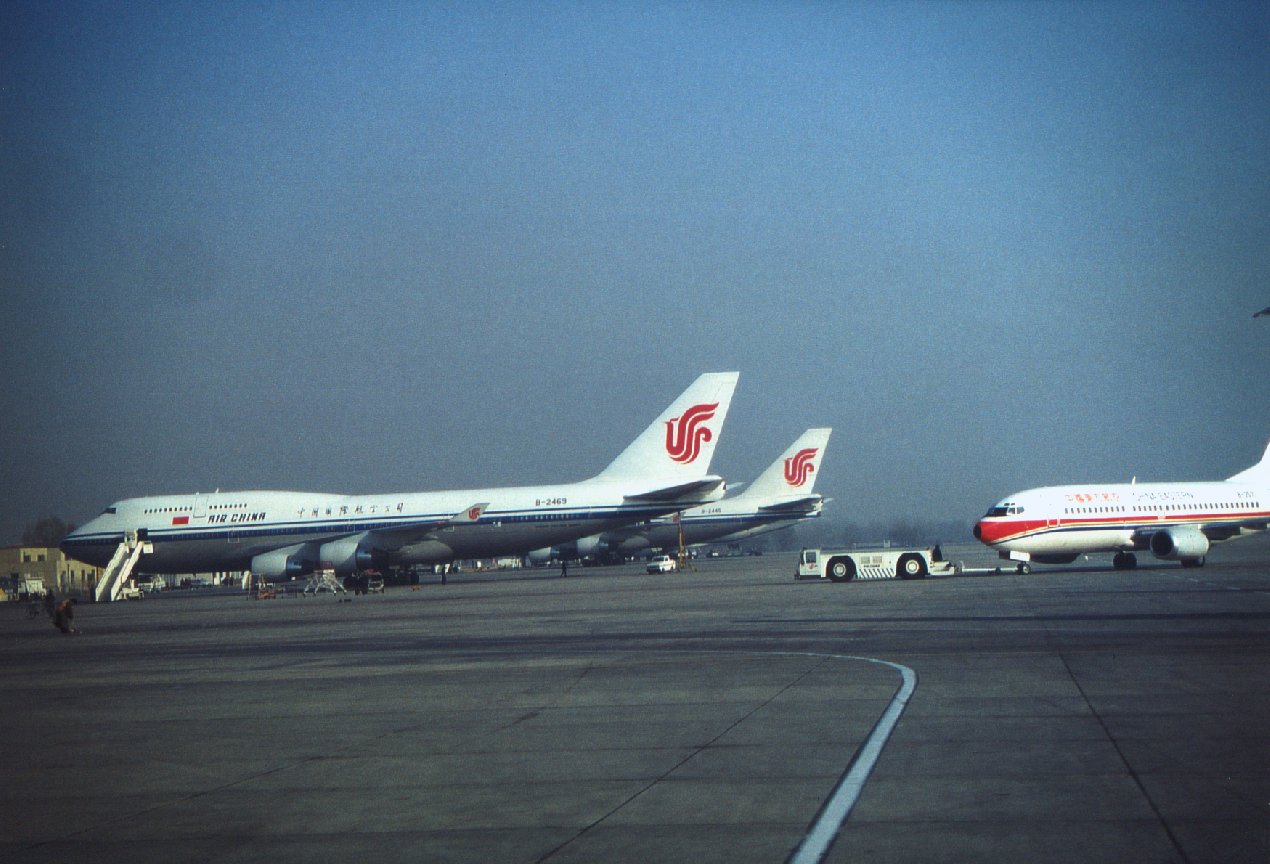As an interpretation of traditional chinese culture the roof of the airport has a dragon-like form. According to Norman Foster [...] this is a building borne of its context. It communicates a uniquely Chinese sense of place and will be a true gateway to the nation. This is expressed in its dragon-like form and the drama of the soaring roof that is a blaze of ‘traditional’ Chinese colours – imperial reds merge into golden yellows. As you proceed along the central axis, view of the red columns stretching ahead into the far distance evokes images of a Chinese temple.
Project description
Located between the existing eastern runway and the future third runway, Terminal 3 and the Ground Transportation Centre (GTC) together enclose a floor area of approximately 1.3 million m2, mostly under one roof. The first building to break the one million square meter barrier, it will accommodate an estimated 50 million passengers per annum by 2020.
 Beijing China Airport
Beijing China Airport Beijing China Airport
Beijing China Airport Beijing China AirportAlthough conceived on an unprecedented scale, the building’s design aims to resolve the complexities of modern air travel, combining spatial clarity with high service standards. It will be friendly and uplifting for the passenger as well as easy to navigate. Comprising three connected, light-filled volumes – T3A, B and C – the simple, symmetrical diagram fans out at either end to accommodate the arrivals and departure halls for T3A (processing terminal and domestic gates) and T3B (international gates). The satellite T3C (domestic gates) occupies the centre of the diagram. This arrangement is an efficient means of maximising the perimeter, so increasing the capacity for aircraft stands, while maintaining a highly compact and sustainable footprint.
Beijing China AirportAlthough conceived on an unprecedented scale, the building’s design aims to resolve the complexities of modern air travel, combining spatial clarity with high service standards. It will be friendly and uplifting for the passenger as well as easy to navigate. Comprising three connected, light-filled volumes – T3A, B and C – the simple, symmetrical diagram fans out at either end to accommodate the arrivals and departure halls for T3A (processing terminal and domestic gates) and T3B (international gates). The satellite T3C (domestic gates) occupies the centre of the diagram. This arrangement is an efficient means of maximising the perimeter, so increasing the capacity for aircraft stands, while maintaining a highly compact and sustainable footprint. Beijing China Airport
Beijing China Airport Beijing China Airport
Beijing China Airport Beijing China Airport
Beijing China Airport Beijing China AirportThe single unifying roof canopy is perforated with skylights to aid orientation and bring daylight deep into the building. The colour palette moves through 16 tones from red at the entrance at T3A through to orange and finally yellow at the far end of T3B. This establishes a subtle zoning system that breaks down the scale of the building and enables easy wayfinding. This palette is also applied north to south in the ceiling above the arrivals and departures halls, heightening the sense of curvature in the roof plane.
Beijing China AirportThe single unifying roof canopy is perforated with skylights to aid orientation and bring daylight deep into the building. The colour palette moves through 16 tones from red at the entrance at T3A through to orange and finally yellow at the far end of T3B. This establishes a subtle zoning system that breaks down the scale of the building and enables easy wayfinding. This palette is also applied north to south in the ceiling above the arrivals and departures halls, heightening the sense of curvature in the roof plane.Connections between T3A and T3B take place on a high speed automated people mover (APM) which travels at up to 80kph, with a journey time of just two minutes. The APM is easily accessed from the main departure level and set within a landscaped ‘green’ cutting, exposed to daylight and views up and through the building, all of which helps to maintain a sense of orientation.
No comments:
Post a Comment